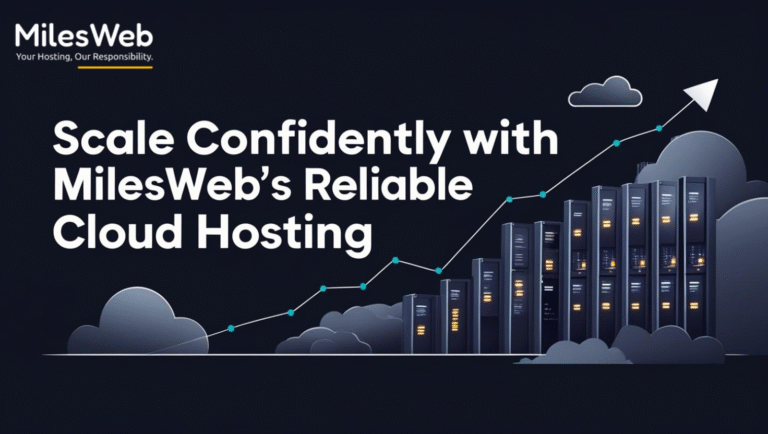How Cloud Hosting Powering OTT And Streaming Services

The digital entertainment industry is growing fast, and video streaming is at the center of it. From big players like Netflix and Amazon Prime to small creators and niche OTT (Over-The-Top) platforms, everyone wants reliable, high-quality streaming that can scale as audiences grow.
Cloud hosting premium solutions will be central to these opportunities, as they will offer the highest performance at owned scale and availability to meet the demands created from modern media consumption.
Before exploring the technical benefits of cloud servers, it’s essential to understand the cloud servers pricing in comparison to traditional infrastructure. Traditional hosting usually comes with fixed pricing, limited flexibility, and high upfront hardware costs. Cloud hosting works differently. You pay only for what you use, which makes it easier for new platforms and established companies to manage their spending while still getting top-tier performance.
In this blog, we will explore how cloud hosting supports video streaming and OTT platforms, provide a cost evaluation of cloud servers to traditional hosting offerings, and highlight the advantages for content providers to invest in cloud hosting as part of a competitive offering.
Smart Solutions for Video Storage and Transcoding
Cloud storage makes handling large video files simple. You can scale your storage anytime, whether you’re working with standard definition videos or high-resolution formats like 4K and 8K.
Most cloud platforms also offer automated video transcoding. They convert your videos into different resolutions and formats depending on the user’s device and available bandwidth. So whether someone is watching on a slow 3G network or a smart TV with high-speed internet, the stream stays smooth.
CDN-Enabled Global Content Delivery

When a user streams a video, the CDN can serve the content from the closest server, which helps reduce latency and improve loading. This is a significant benefit for global OTT platforms. The content can be delivered locally instead of being served from the same server.
Cloud Hosting is a simple way to deliver content across continents while minimizing buffering and improving the quality and uptime for users.
Reliable Performance with Maximum Uptime
Downtime can be detrimental to streaming applications. Cloud hosting providers deploy multiple highly redundant systems, backup systems, and failover techniques to improve high availability. To help meet high availability levels, OTT platforms can deploy across multiple regions, ensuring the service will continue when one data center experiences downtime.
Redundancy and reliability are trademarks of premium cloud hosting services. Premium plans often come with monitoring technologies, uptime guarantees, and 24/7 technical support, ensuring quality delivery of content even when something goes wrong.
Adaptive Solutions for Dynamic Content Scaling
Providers that offer live programming or release exclusive content often generate unpredictable spikes in viewers. Traditional servers crash under pressure, resulting in buffering, lag, or even shutdowns that lead to poor viewer experiences. It can result in reduced viewership for your platform, ultimately causing a business loss.
Cloud services can scale on demand while the viewer service quality remains constant in return. Delivering this flexibility and reliability is essential for businesses to meet the performance and availability of their users, regardless of demand. When users experience continuity on your platform without any inconsistencies, they are likely to visit your platform on a repeat basis.
Live Analytics for Enhanced Personalization
Cloud platforms equip organizations with sophisticated real-time data analytics options to measure and analyze user behavior. This immense transparency enables content aggregators to identify watching behavior, view history, and user interests as they occur. Once the data is captured, platforms can curate and provide personalized content recommendations to meet the individual needs and interests. This personalized engagement improves user engagement, satisfaction, and retention rates.
Furthermore, real-time data reports help organizations process rapidly changing user discovery trends, develop quickly optimized content delivery channels, and organize better decision-making processes that improve user patterns on the platform and the overall likelihood.
Eco-Friendly Solutions through Green Infrastructure
As sustainability becomes more important, many cloud providers are investing in energy-efficient infrastructure powered by renewable energy.
When companies switch to cloud infrastructure, they can reduce their environmental footprint and align with the sustainability efforts of the platform’s users. Something that more modern consumers care about.
Closing Summary
Cloud hosting has become a key part of how modern video platforms grow. With scalable storage, global content delivery, real-time analytics, and strong uptime, it gives content creators the tools they need to build a reliable and engaging streaming experience. The flexible pricing model makes it even more appealing compared to traditional setups.
Whether you are part of a large media company or an independent producer, adopting cloud hosting for your video platform is not just a technical upgrade; it’s a move to provide better performance, user satisfaction, and long-term growth. Ensure you subscribe to the services of a reputable hosting company with a strong track record of delivering exceptional service.





